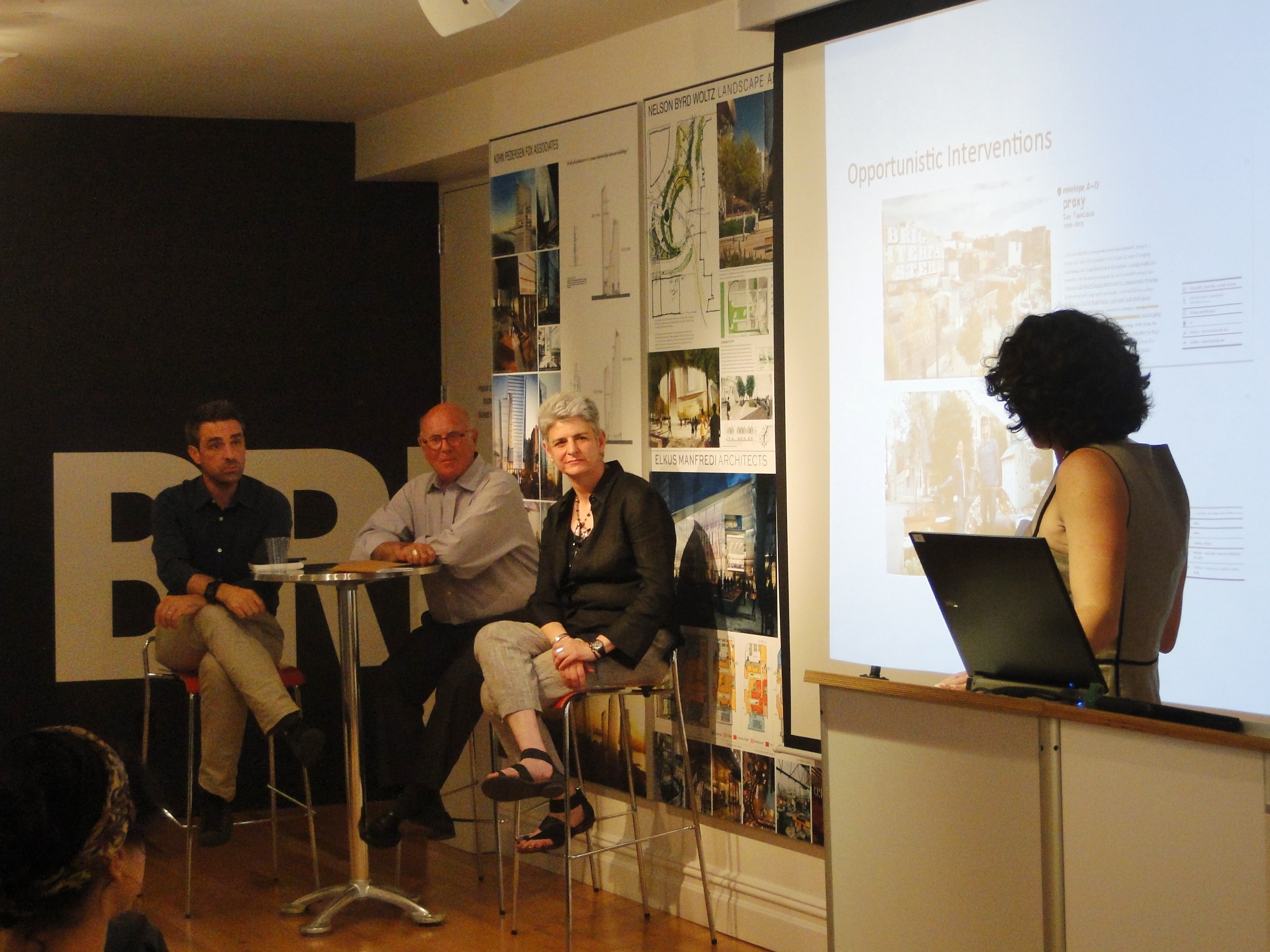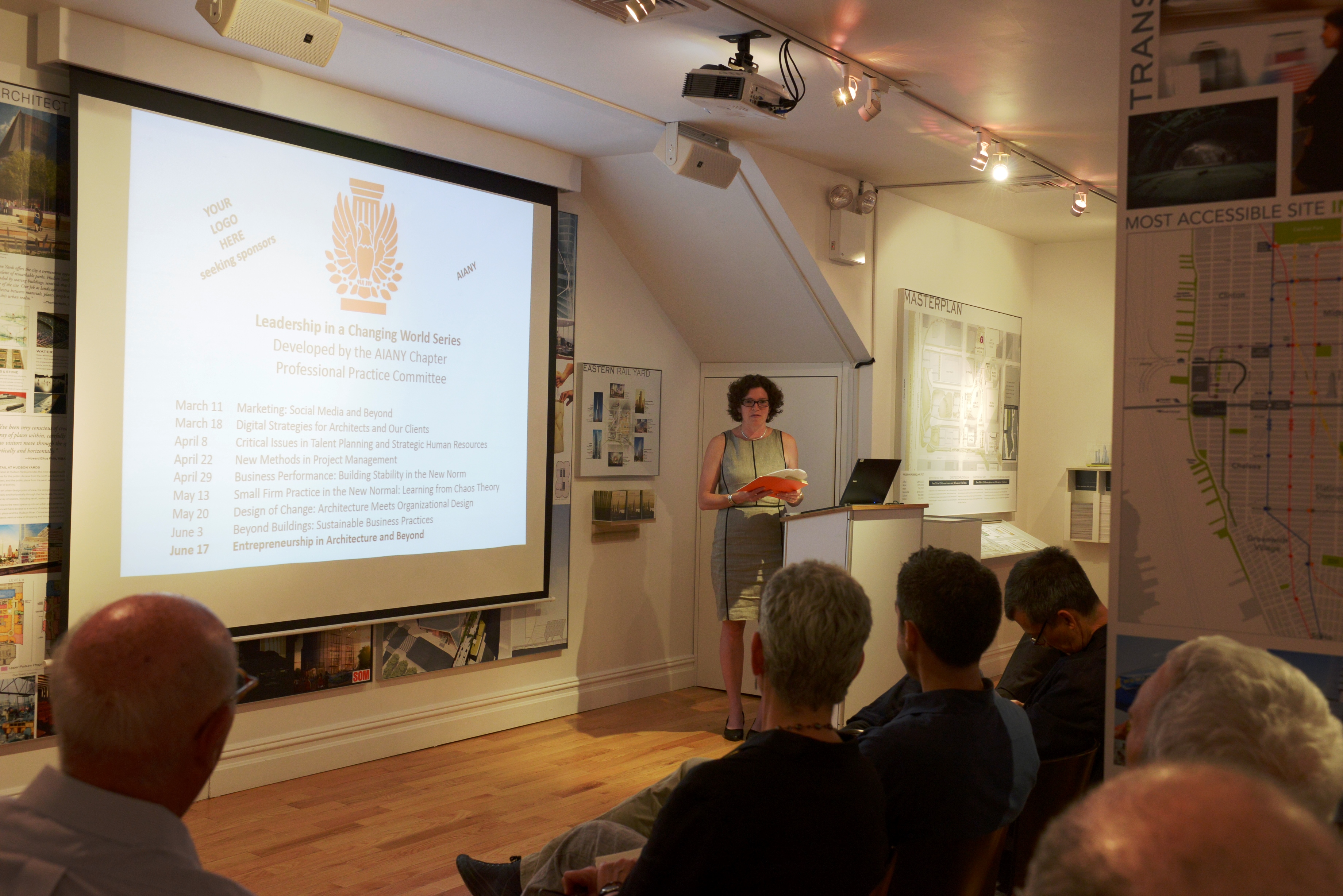by: Matt Shoor AIA LEED AP
Entrepreneurship is inextricable from the practice of architecture, especially in New York City’s competitive business environment. And, as generations of designers seeking their professional niche have learned, entrepreneurship takes many forms. Traditional practice as a firm principal or managing partner is but one of many routes available to those with architectural training or experience. The speakers at the ninth and final “Leading Architecture in a Changing World” lecture series presented attendees with but a fraction of the myriad options available to the passionate and driven designer.
Mike Mitchell, AIA, served as a noteworthy example of one of the more common entrepreneurial paths for an architect. After gaining valuable experience working at reputable firms, he decided to found his own, Back40 Architecture. Mitchell explained that one of the primary goals of his practice is to explore the feasibility of constructing on infill sites within existing urban contexts. He implied that this direction was the result of intersecting personal interests: a concern for natural resource management and allocation, nurtured while visiting crowded third-world cities; a creative impulse inspired by Gordon Matta-Clark’s land-advocacy conceptual art project “Fake Estates”; and recognition of an emergent business niche in one of the densest cities in the United States.
Identifying an underserved market segment was also the way that Gary Unger, the founder of CPG Architecture, built a robust architectural practice. Relatively early in his career, he noted that architects typically did not address the facilities needs of clients following the completion of a structure. In an effort to take advantage of this lack, he decided to focus on what he called “second-day services,” those that follow in the wake of a building’s grand opening. He also branched out into a different realm of the construction business when he founded Link Systems, a firm that designs software, and now apps, for use in facilities management and construction.
As a professor and scholar, Sharon Haar, AIA, sees that entrepreneurial opportunities are emerging from the academic sphere. Especially in urban areas, where town and gown bleed into one another, the intellectual dialogue at universities can spawn entirely new industries and services. Although it is located in a bucolic suburban setting rather than a gritty city, Haar noted that Stanford has been the incubator for a large part of the Silicon Valley technology industry for more than half a century. In other cases, however, Haar opined that the academy’s research into new ways of living and working in dense metropolitan areas can open up vistas to new forms of building and business.
Regardless of their individual paths, Mitchell, Unger, and Haar clearly understand that successful entrepreneurship requires the ability to first recognize underserved markets, and then to act swiftly to exploit those needs through creative and thoughtful solutions. In addition, the speakers indicated that those starting new ventures need to be network-savvy self-promoters with fire in the belly and a little bit of luck. They seemed to agree that entrepreneurship is innate, and that the dedication and passion required to begin and sustain a new business enterprise are, in fact, unteachable.
Matt Shoor is an architect, writer, and educator currently employed by Macrae-Gibson Architects. He is a frequent contributor to e-Oculus, and can be reached at mshoor@gmail.com.
Event: Leading Architecture in a Changing World: Entrepreneurship in Architecture and Beyond
Location: Center for Architecture, 06.17.13
Speakers: Mike Mitchell, AIA, Founder, Back40 Architecture; Gary Unger, Founder, CPG Architecture; Sharon Haar, AIA, Associate Dean for Research Development and Student Success, College of Architecture and the Arts, and Professor, School of Architecture, University of Illinois at Chicago
Moderator: Melissa Marsh, Assoc. AIA, Founding Principal, Plastarc
Organizers: AIANY Chapter Professional Practice Committee and Chapter staff









